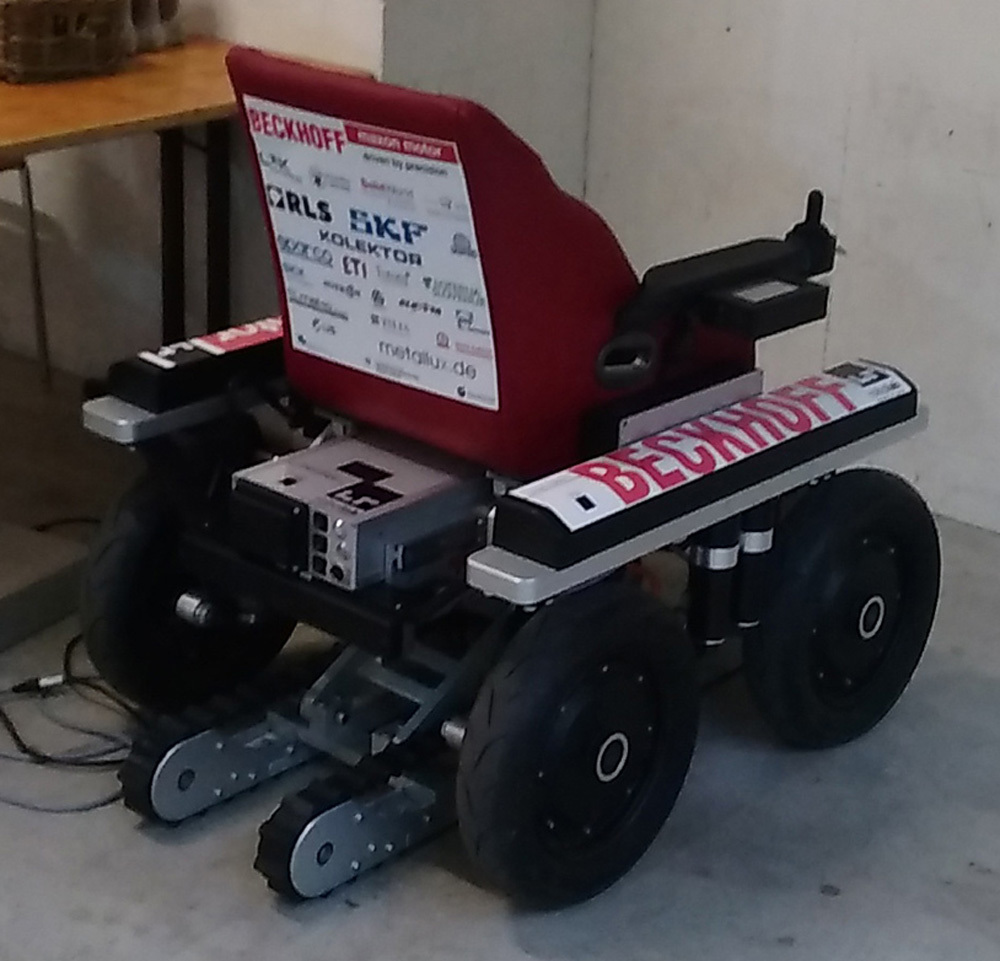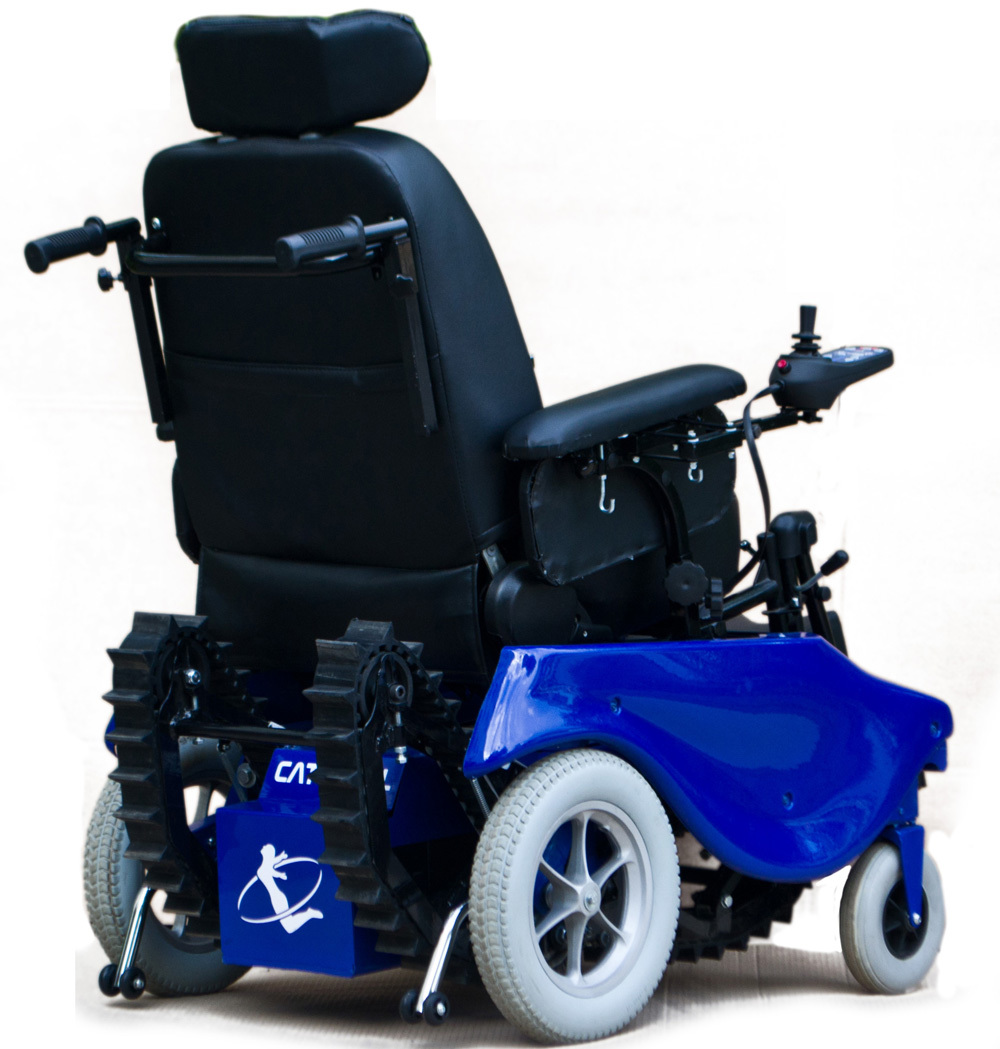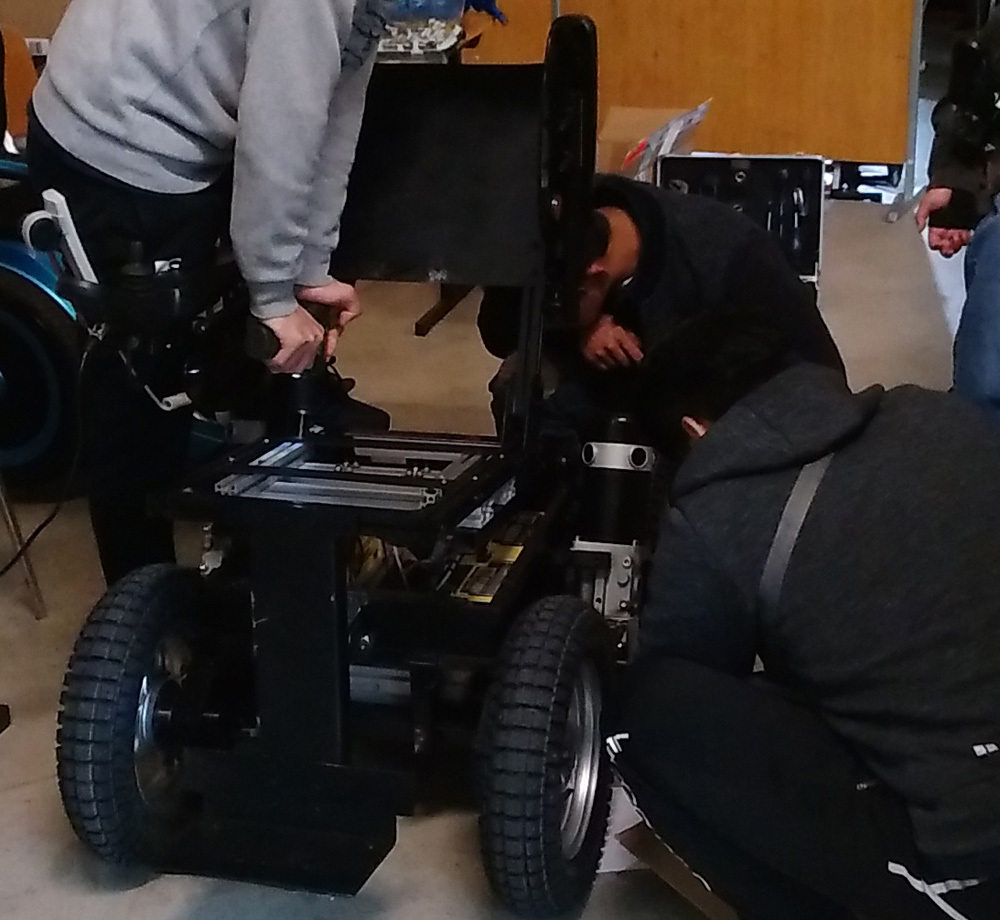Wheelchair Racing - Cybathlon 2016 Photo / Video Report
In October, the first Cybathlon championship took place in Zurich. He was already loudly called the first international battle of cyborgs. 6 teams from Russia participated in 6 nominations:
Our CaterWil team participated in the Powered wheelchair Race nomination.
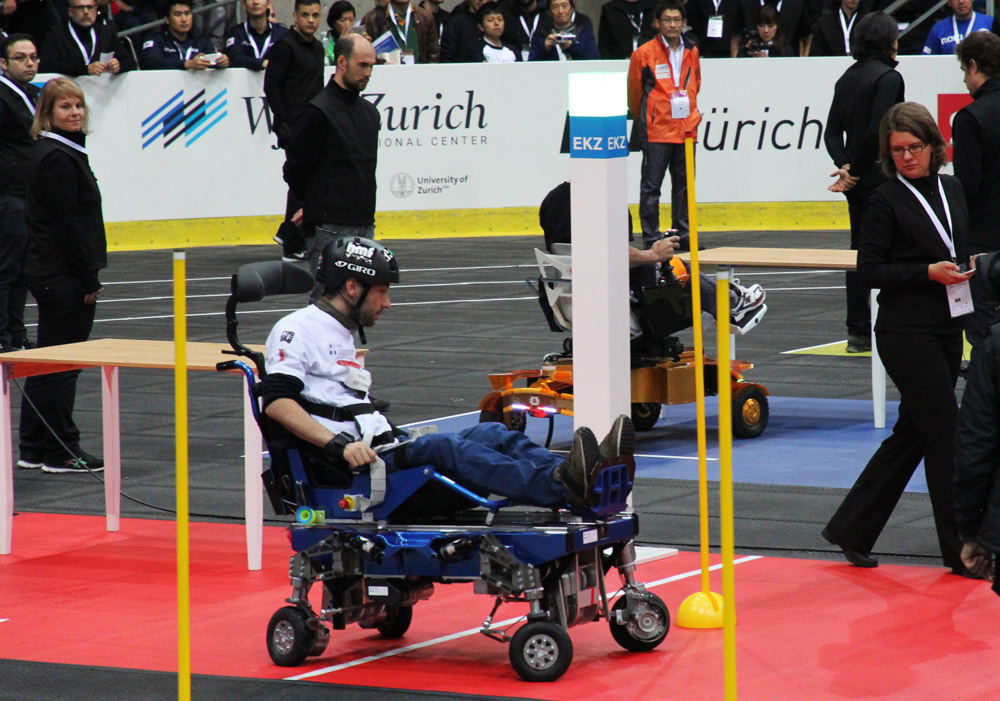
The chip of the CaterWil GTS3 stroller developed by us is that the device has a wheeled and tracked platform. We call it so - a transforming carriage. To move on a flat surface, the pilot uses the wheels, and if necessary to overcome obstacles, the wheelchair can turn into a tracked all-terrain vehicletank .
The track in the category “Powered wheelchair” consisted of 6 tests. Tasks are arranged by increasing difficulty:


Pilots "fireballs" must be people with the appropriate disability. The driver of our team, Yuri Larin, went through all the obstacles to "excellent", scored the maximum number of points, but lost in speed. According to the results of races from 12 teams from around the world, CaterWil took the 6th place.
Scoreboard:
The CaterWil team's participation in the Cybathlon 2016 competition was sponsored by the Technology of Opportunities program and the Schwabe Defense & Defense plant.
International Cybathlon competitions, like the Olympic Games, will be held every 4 years. For the development of domestic assistive technologies, the Russian Federation on Cybatlon was created. The Federation and we in its composition will organize annual All-Russian competitions. The following will be held in the fall of 2017.
So, gentlemen, engineers, let's help people and measure technology!
- Brain-Computer Interface (overcoming the virtual obstacle strip using a neural interface)
- Powered Exoskeleton Race (exoskeletons)
- Powered Arm Prosthesis Race (hand prostheses)
- Powered Leg Prosthesis Race (prosthetic leg)
- Powered Wheelchair Race (electric wheel races)
- FES Bike Race (paralyzed bike riders with electrostimulation)
Our CaterWil team participated in the Powered wheelchair Race nomination.
The chip of the CaterWil GTS3 stroller developed by us is that the device has a wheeled and tracked platform. We call it so - a transforming carriage. To move on a flat surface, the pilot uses the wheels, and if necessary to overcome obstacles, the wheelchair can turn into a tracked all-terrain vehicle
The track in the category “Powered wheelchair” consisted of 6 tests. Tasks are arranged by increasing difficulty:

- Drive up to the table so that half of the thigh came under the table. The test shows how stroller applicable in everyday life.
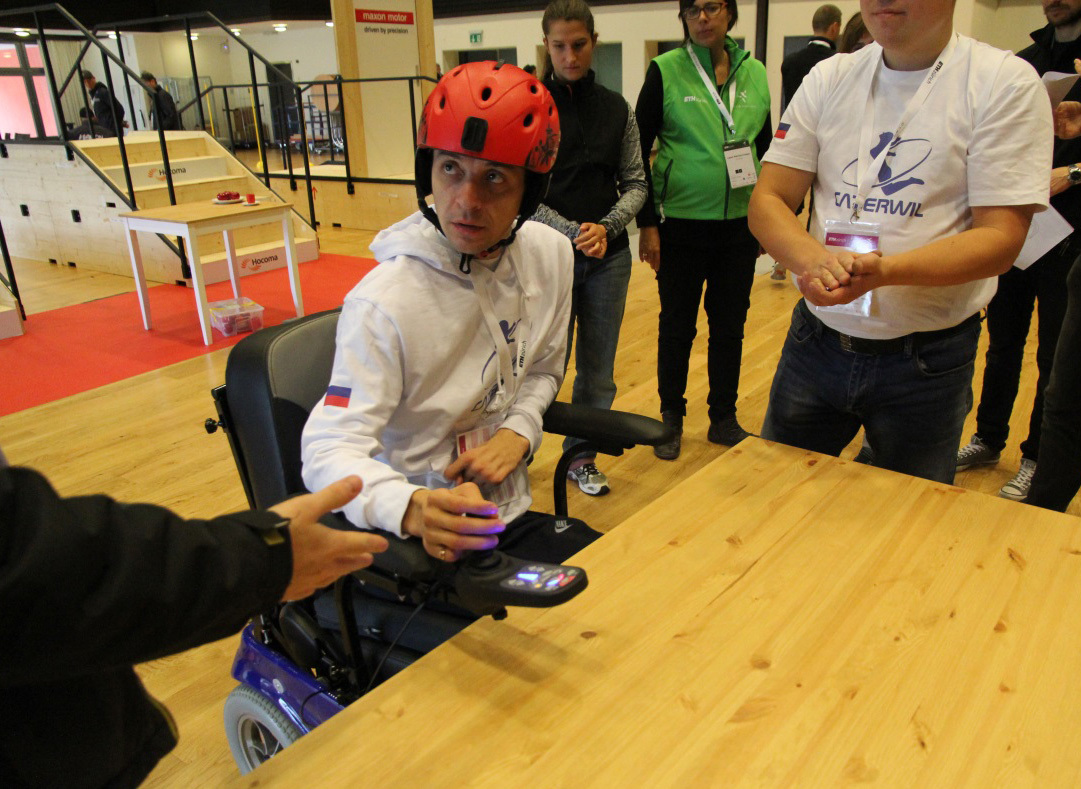
By the way, the workshop “EX print” helped us to make an ergonomic and aesthetic console.
- Quest "Snake". This exercise partially reveals the maneuverability of devices.
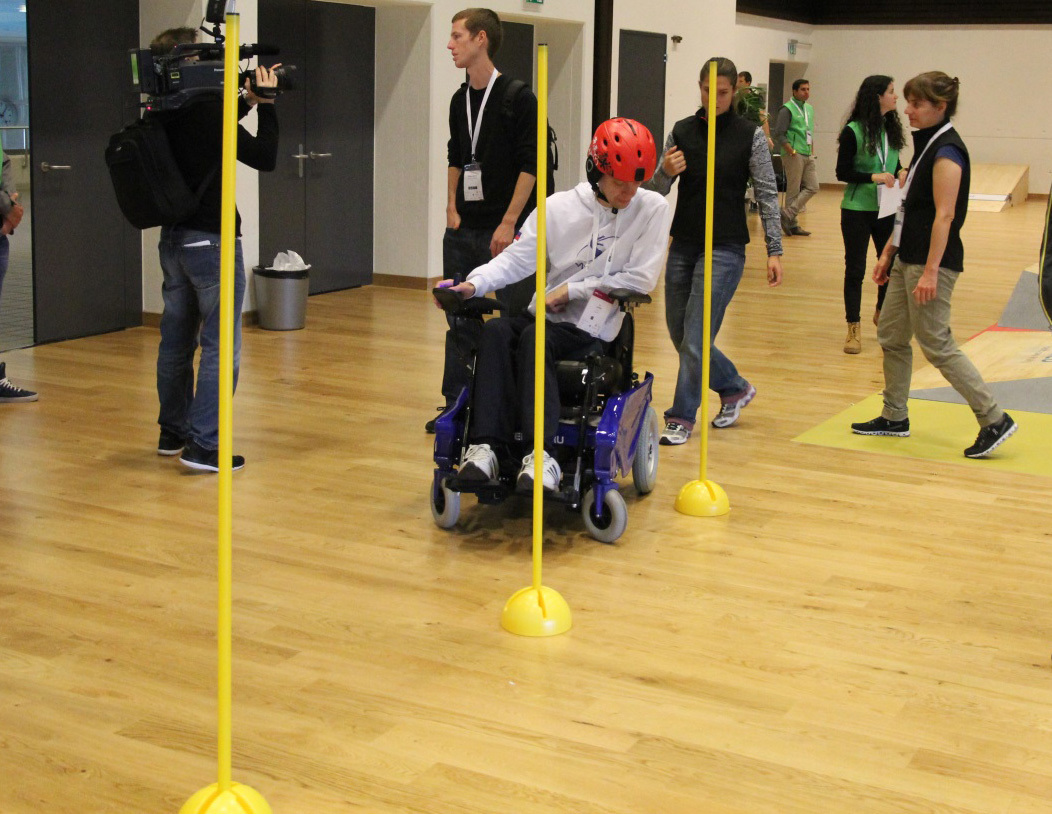
- Go up the steep ramp (20 degrees), open the door, drive through the doorway, close the door, go down from the ramp. A very good test that wheelchair users face daily.

- The obstacle “Uneven road” is a section with logs fixed at different angles. The task is interesting for engineers, technically difficult, but in everyday life is not so important.

- Obstacle "Inclined surface". This is the fifth task, for it was given a lot of points, but in fact it is one of the simplest. I think an ordinary electric wheelchair can easily cope with such a task. But in everyday life, such an obstacle is also not often encountered.

- In the task "Ladders" you need to go 3 steps up and go down 3 steps. Ladders are the biggest problem of an accessible environment for wheelchair users. This question is still relevant around the world and will be relevant for many, many years, since it is technically impossible to install elevators and ramps everywhere. This exercise is also the most interesting from an engineering point of view. To pass this obstacle, the wheelchair should be not just an all-terrain vehicle, but a real robot with a variety of sensors and mechanisms to shift the center of gravity, climb up and safely go down.

Pilots "fireballs" must be people with the appropriate disability. The driver of our team, Yuri Larin, went through all the obstacles to "excellent", scored the maximum number of points, but lost in speed. According to the results of races from 12 teams from around the world, CaterWil took the 6th place.
Scoreboard:
A place | A country | Team | A photo | Points | Time, sec |
one | Switzerland | HSR Enhanced | 660 | 214 | |
2 | Hong Kong | Hkustwheels |
| 660 | 219 |
3 | Slovenia | Avalche |
| 660 | 267 |
four | Japan | RT-Movers | 660 | 312 | |
five | Hong Kong | B-free in city | 660 | 358 | |
6 | Russia | Caterwil |
| 660 | 399 |
7 | USA | Herl | 530 | 181 | |
eight | Great Britain | Team imperial | 530 | 266 | |
9 | Korea | Enable |
| 426 | 94 |
ten | Greece | Laddroller | 426 | 246 | |
eleven | Great Britain | Team imperial | 307 | 102 | |
12 | Switzerland | Scewo | 0 | 0 |
The CaterWil team's participation in the Cybathlon 2016 competition was sponsored by the Technology of Opportunities program and the Schwabe Defense & Defense plant.
International Cybathlon competitions, like the Olympic Games, will be held every 4 years. For the development of domestic assistive technologies, the Russian Federation on Cybatlon was created. The Federation and we in its composition will organize annual All-Russian competitions. The following will be held in the fall of 2017.
So, gentlemen, engineers, let's help people and measure technology!


